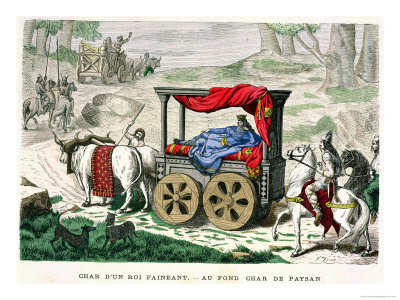That legend, however, was a later creation and seemed based on an earlier miracle of St. Rémy, called the "Legend of the Baptism of the Moribund Pagan." In this legend, when Rémy (c.437 - 533) was the Bishop of Reims, a dying pagan requested baptism, but there was no oil for anointing. Rémy asked that two vials be placed on the altar, and as he prayed they miraculously filled with a chrism that gave off an unearthly fragrance.
At the time of Archbishop Hincmar of Reims (806 - 882), Rémy's sepulcher was opened and found to contain two vials of oil. In a clever piece of marketing, Hincmar combined the discovery of the vials, the story of the pagan, and the knowledge that Rémy baptized Clovis, into a new legend that allowed him to declare that French kings in the future should all be crowned at Reims Cathedral and anointed with the miraculous oil that Reims possessed.
The Holy Ampulla is about 1.5 inches tall and made of Roman glass. Its use was first noted at the coronation of Louis VII in 1131, and the connection to Clovis and Rémy was made common knowledge. Its last use for a coronation (for a time) was that of Louis XVI in 1775, because it the ampoule was destroyed.
The illustration above is not the Holy Ampulla found in the tomb of St. Rémy. During the French Revolution, symbols of monarchy were routinely vandalized. Fearing the invasion of the cathedral, a cleric drained the chrism from the ampoule. Shortly after, a revolutionary smashed the ampoule. The fragments were saved by several of the faithful, and in 1823 they were brought together. A reliquary was ordered by Louis XVIII to house the fragments, and a new glass bulb was created to hold the oil. It is still preserved at the Saint-Rémi Basilica in Reims. The new Holy Ampulla and its contents were used for the coronation of Charles X in 1825.
And speaking of French kings, we've never said much about Louis VII, although he is connected to several posts of the past, including having one of the most amazing women of the Middle Ages divorce him for a younger man. Let's give Louis his due tomorrow.











